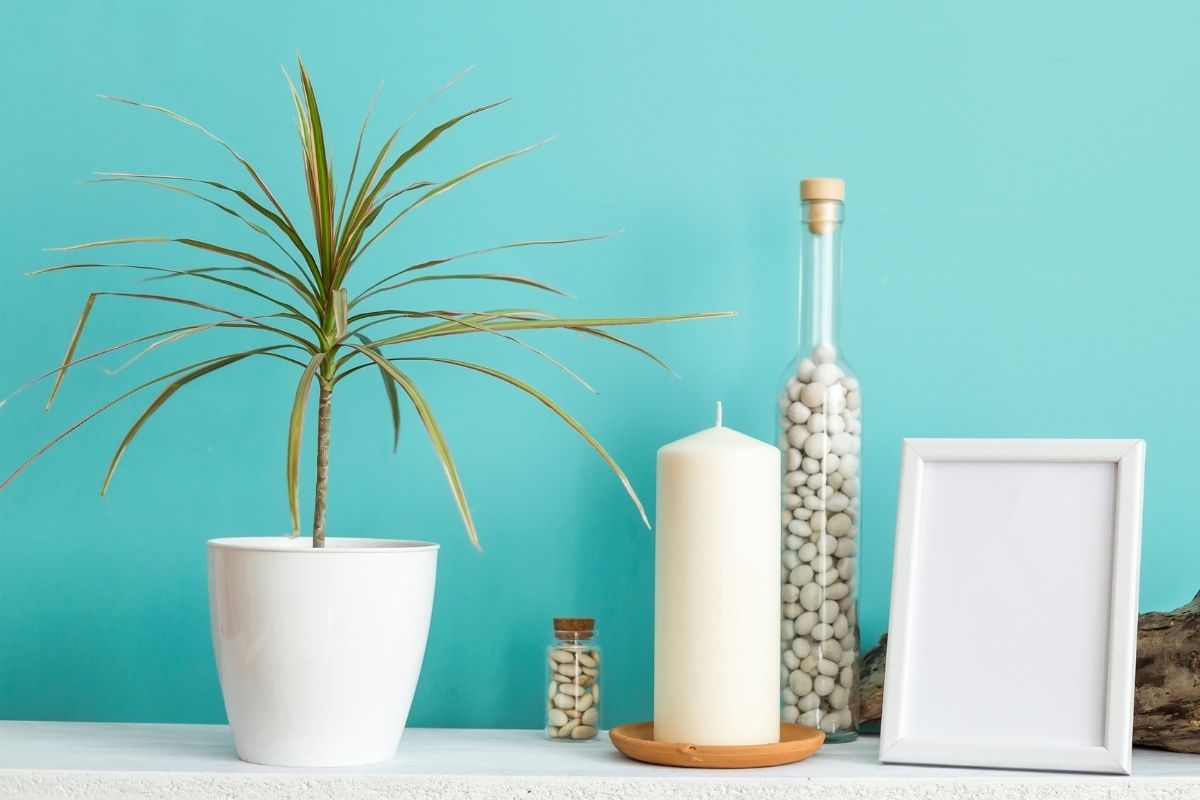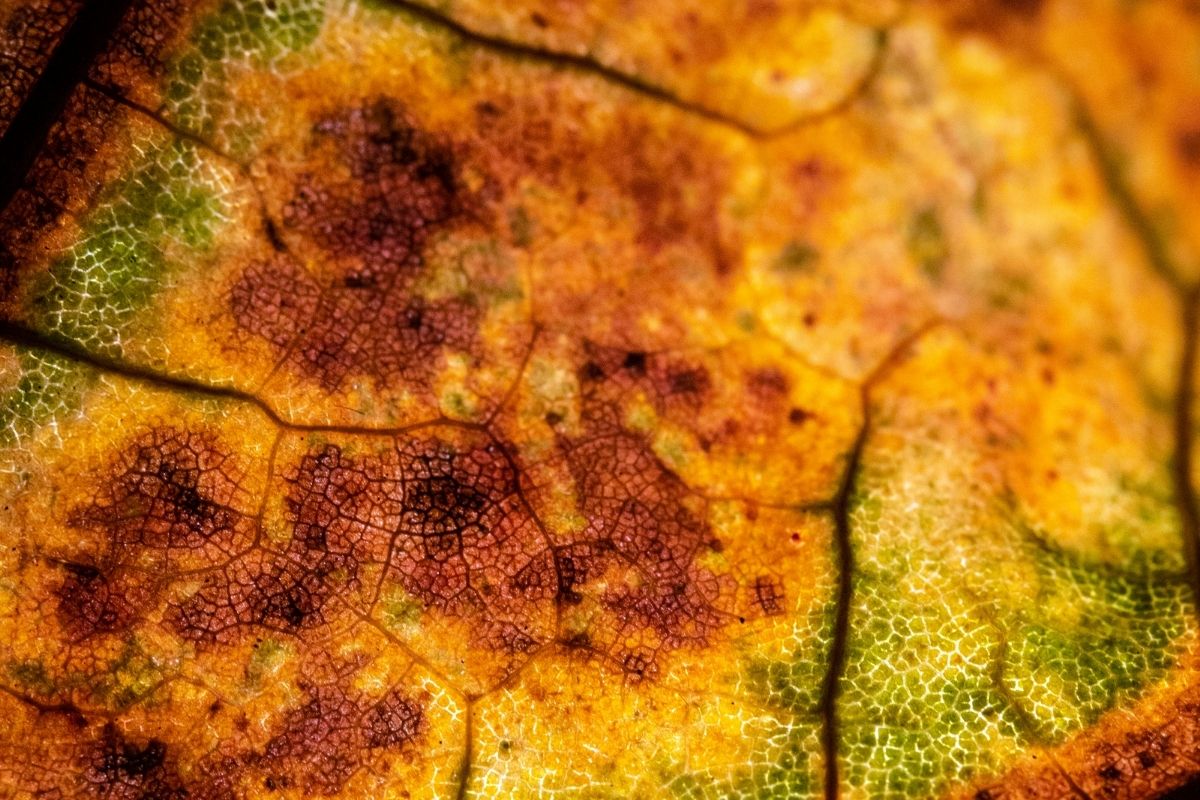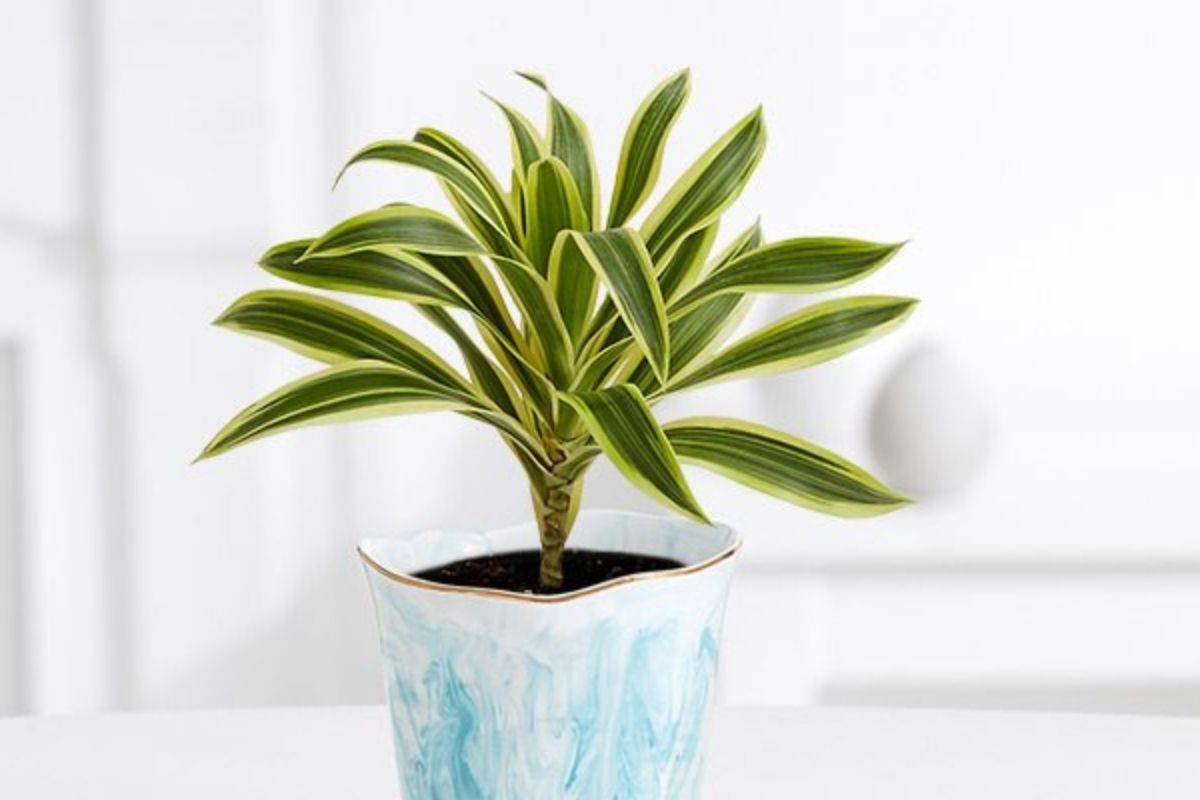Dracaena plants are known for their large, glossy, green leaves that grow vertically. The leaves also have sharp edges. These features make the plant attractive indoors or outdoors, and the reasons why your dracaena is changing color is the popularity of this plant has grown immensely over the years.
Unfortunately, however, these plants’ gorgeous leaves can turn yellow when they are not cared for properly.
If the leaves of your dracaena are turning yellow, and you would like to learn how to help your plant, keep reading! We will be diving into all the reasons why your plant’s leaves could be turning yellow.

Why The Leaves Of Your Dracaena Are Turning Yellow
There are a number of reasons why your plant’s leaves could be becoming yellow. We will take a look at these reasons below, and learn what you can do to help.
Temperature Changes
Dracaena plants do not like sudden temperature changes. If your living space is very cold (think freezing temperatures), then your plant may become uncomfortable. When this happens, your leaf will begin to yellow as an attempt to protect itself.
When you notice this happening, try moving your plant into a warmer location. Even cold drafts will shock the plant.
You should try to keep your dracaena in temperatures between 70-80 degrees Fahrenheit throughout the year. Ensure the windows are closed at night in the winter to make sure your plant stays healthy.
Similarly, in the summer months, you can place your plant near windows, since it will be warm enough to enjoy the warmth and light.
Older Leaves
The leaves of your dracaena could simply turn Yellow and fall off because of their age. When you start to notice yellowing leaves on your plant, carefully either trip or pull them off. Soon, new foliage will grow there, and your plant will look fresh and green again.
Underwatering
Under watering your dracaena is one of the top reasons why its leaves might turn yellow. You might see brown spots on the leaves, or curling leaves and stems.
You should figure out a schedule to try to follow when it comes to your dracaena. Unlike many other plants, the dracaena’s soil should always be slightly moist.
Avoid watering the plant too much, but give it smaller amounts more frequently. Avoid using cold water, too, as these plants typically don’t react well to it.
You should aim to water your dracaena one or twice a week, but do not drench the soil. The soil should not be soggy at any time.
Overwatering
Overwatering is another big cause for yellow leaves. As overwatering can cause root rot, a fungal infection, and potentially kill your plant, always ensure that you have at least one drainage hole to get rid of excess water.
A dracaena plant needs well-drained soil that does not contain excess moisture. If mold starts growing in the soil around your plant, this should be addressed immediately because there are some molds that can kill your plant.
It is also advised to avoid getting the leaves of these plants wet. Rather than using a top-down method for watering, use a bottom up. This is when you place the plant pot in water for a period of time before removing it and letting it drain.
By doing this, all the moisture gets to the plant directly through the roots and excess water is drained.
Leaf Rot
Another common cause of yellowing leaves is leaf rot. This is also called tip burn. Leaf rot occurs when insects bite holes in leaf tissues and feed there. Your plant looks healthy until the problem develops. Then, the area turns from green to yellow.

You can help your dracaena overcome leaf rot by removing dead, damaged or unhealthy leaves regularly. You should remove all leaves that appear to be wilted, old, infected, or discolored. These leaves can harbor insects, so you want to remove them if possible.
It is important to know how each leaf grows on the plant, so you can prevent future issues. Once you start noticing that your plant has been affected by leaf rot, you would need to address this issue quickly, before it becomes worse.
Low Humidity
Dracaena plants do not do well in dry environments. You are probably going to see brown leaf tips or yellowing margins in the leaves if the humidity is too low. To remedy this situation, you can use a pebble tray to help increase humidity. Besides that, frequent misting will help maintain a healthy plant.
Avoid keeping your dracaena near heaters or radiators. This is because the air in those areas are typically drier, which means the plant will dry out.
RELATED: Why Are They Turning Brown? Tips For Saving Your Dracaena’s Tips
Bad Water Quality
Tap water isn’t any good for dracaena plants because of the chemicals in it. Instead, use distilled water or allow tap water to sit out for a day or two so that the chemicals evaporate.
Any water with fluoride will harm your plant, slowly poisoning it as it builds up in the soil. When this happens, the leaves will change color and the plant could possible even die if left untreated.
If you are worried that your dracaena is suffering from poisoning from the water, you can either flush the soil with distilled water or repot the plant with fresh soil. Flushing the chemicals from the water is the better option, but repotting should be done in severe cases.
Pests
Pests may also target your dracaena causing damage to its structure. The most obvious pests include slugs or snails. Slugs and snails are voracious eaters, meaning they’ll go after anything in sight.
They tend to prefer dark leafy greens, so make sure you take a look under the plants once in a while and remove any snails that you find.
Insects such as aphids, mealybugs, scale are other types of bugs found on dracaena. Aphid causes tiny bumps to form on the leaves, while mealybug creates spots between the leaves. Scale does have some beneficial aspects to them; they actually provide protection against drought conditions.
Honeydew can accumulate on the leaves, making them sticky and unattractive. Honeydew attracts ants and is often found in proximity to ants.
Ants love honeydew so much that they will frequently create a webbing around their nest to keep the sugary substance away from predators. If you notice large amounts of honeydew collecting on the leaves, then you should definitely try to get rid of these unwanted visitors.
Worms can cause problems for dracaena. Some common worms include root-eating nematodes and white grubs. Nematodes are microscopic roundworms that feed off roots and weaken the plant. Worms typically favor warm, moist climates, so always check under the plant for signs of movement.
Lighting
Unsuitable lighting will also cause the leaves of your dracaena to turn yellow. Dracaena plants typically enjoy bright, indirect sunlight. Too much sunlight, or direct sunlight, will cause the leaves to burn, and too much shade will make for an unhappy plant.
Getting the light balance just right is crucial to a happy plant.
Final Thoughts
Dracaena plants are beautiful additions to any home. They are very rewarding plants to have as long as you take good care of them.

Remember, the main reasons why your plant’s leaves are yellow are likely to be soggy soil, which can result in root rot fungus, a low humidity level, cold weather, pests, and lighting conditions. Like all potted houseplants, it is your responsibility to take care of these plants.
Remember to do regular misting and add necessary fertilizer from time to time. By doing these things, you will have a hardy plant that will light up your life.
Frequently Asked Questions
What Lighting Conditions Do Dracaena Plants Like?
Dracaena plants light bright, indirect lighting conditions. Direct light could burn the plant, and a lack of light will cause sad leaves.
Do Dracaenas Like A Lot Of Water?
Dracaena plants do not like a lot of water, but they do like to have moist soil. Dry soil will result in these plants’ leaves drying out. Tepid water is best, too, as cold water may shock the plant. Always check the water temperature before giving any to your plant.
Are Dracaenas Easy To Look After?
Yes, dracaenas are easy to look after! You just need to make sure they get enough water (bottled water without chemicals will do), nutrients, and light. If you follow those rules, your plant will keep its lovely green color, and it will be healthy and happy.
What Pests Go For Dracaena Plants?
Some pests that like dracaenas include aphids, slugs, flies, spiders, mites, spider mites, and beetles.
Do Dracaena Plants Like Natural Light?
Yes, dracaena plants love natural light. However, they do not like direct sunlight. Indirect light that is bright is great for these plants.
How Often Should I Water My Dracaena?
You should water your dracaena once or twice a week, using relatively small amounts of water. The potting soil should never be soggy, but it should not become bone dry, out, either. Try to keep to a regular watering schedule. Use clean water without chemicals, especially fluoride.
Should My Dracaena Always Have Wet Soil?
No, your dracaena should not have wet soil. Its soil should be slightly moist, but not soggy.
What Type Of Water Should I Use For My Dracaena?
Distilled water is ideal for dracaena plants, as they are sensitive to chemicals. If you only have tap water, make sure to leave it out for a day or two to allow the chemicals to evaporate.
How Tall Do Dracaena Plants Get?
Dracaena plants can grow up to 10-feet tall.
What Do Dracaena Leaves Look Like?
Dracaena leaves look similar to those of hibiscus (rose mallow). They appear to have five lobes, each about 1/2″ long, and they are green when young, turning brown as the plant grows older. In general, the larger the plant, the more foliage it has. Dracaena are known for having a very attractive appearance.
Are Dracaena Good Indoor Plants?
Yes! Dracaenas make great indoor plants. They are attractive and easy to take care of.
What Soil Do Dracaenas Like?
Dracaena plants like peaty, well-draining potting soil.







